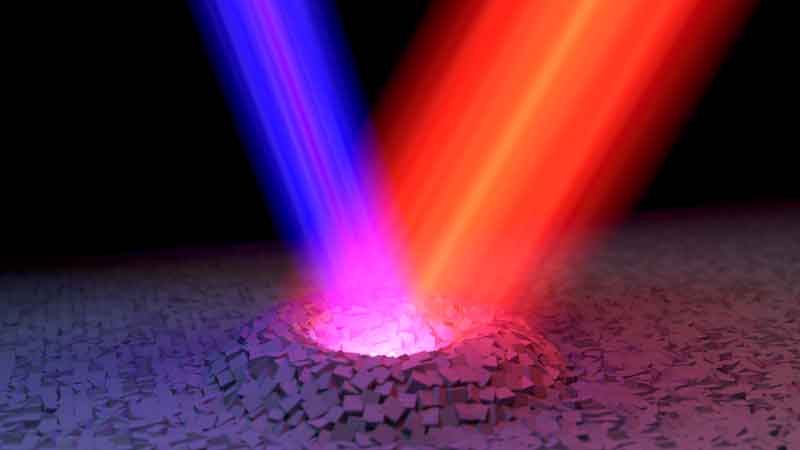6 Oct 2017
Scientists in the Institute of Photonics and Quantum Sciences have reported they are one step closer to technology that could result in electrons being replaced with photons, solving the looming ‘speed limit’ for electronic gadgets.
According to Dr Marcello Ferrera, Assistant Professor in Photonics and Optics, electronics have had long-term success due to how much smaller devices have become, and how robust they are, even when made from a very limited number of fundamental materials.
We discovered that we can drastically and reversibly alter the optical properties of the material by using laser light with different colours.
Dr Marcello Ferrera, Heriot-Watt University
These last two features have been weaknesses in the field of photonics, but Dr Ferrera’s recent findings, published in Nature Communications, could change all of that.
Dr Ferrera and his team have, for the first time, shown how aluminium zinc oxide (AZO) reacts to light when beamed with ultra-fast laser pulses of different colours.
Since AZO is a compound used in touch-screen technology, the discovery could have an immediate impact for the fabrication of novel photonic components.
The nanophotonics experts used one laser beam to explore the optical properties of thin films of AZO, while two different trains of ultra-fast light, pulsed at two distinct frequencies, were shone on the material.
The recorded effects, which lasted for a 10,000th of a billionth of a second, were surprising to say the least.
Dr Ferrera said: “We discovered that we can drastically and reversibly alter the optical properties of the material by using laser light with different colours.
“The reason we used AZO is that, although it has been used in electronic devices for years, we have little knowledge about how it could be used in photonics.
“Electronics have almost reached their capacity and potential; our findings represent a remarkable step towards the full miniaturisation of photonic components: this possibility was ‘science fiction’ few years ago. ”
For more information on Dr Ferrera’s nanophotonics research, visit the Advanced Structured NanoPhotonics Lab’s website.
Hyperlinks















